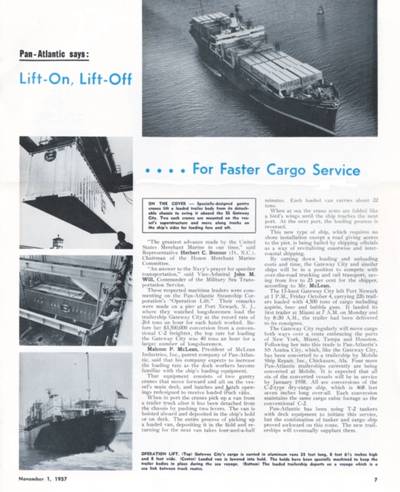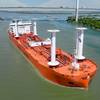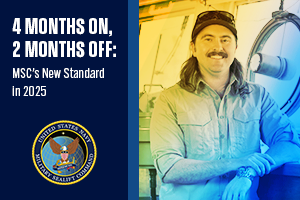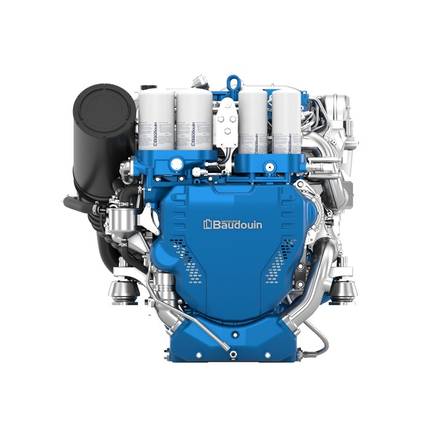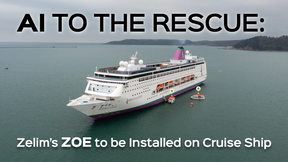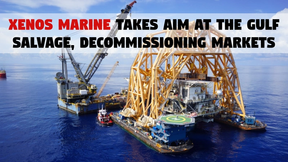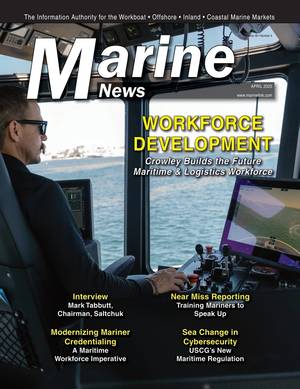Using an SL-7 to Preserve our Container Ship History?
I have raised the subject of SL-7’s as museum ships before in a cursory fashion, but lunch with John Riddle, a retired Sea-Lander, convinced us that it deserves a bit more consideration.
Based on prior columns it should be clear I am extremely cagey about museum ships. Ships are significant historic object, but due to their size they are often impossible to maintain as historical objects. Moreover, we maritime types tend to become sentimental about historic vessels and then discover that the rest of the world really does not care that much about our maritime history and museum ships tend to struggle to survive due to a lack of the larger population’s attention.
Meanwhile, maritime continues to make history and, within the lifetime of our older sailors in arms, we turned the world upside down with the introduction of containerization.
The United States and, to a significant extent Malcolm McLean, but also many other Americans, can fairly lay claim to being the originators of the concept. Somehow this is worthy of memorialization, but, to date, no effort in this regard has been made.
Worse, the first containers ships have all long gone to the scrap yard, and the question arises as to how we would preserve the history of the container ship.
In this regard I would like to make a modest (well maybe an ambitious, but efficient) proposal.
The SL-7’s are nearing the end of their lives and maybe not soon, but certainly inevitably, will end up being scrapped. Why don’t we take one of those ships and designate it today as a museum ship?
Then, when the bell tolls for the SL-7’s, we know what we need to do.
We get to take one of them, and I propose the Ex-Malcolm McLean, the present Capella, and turn it into the container history museum. I think it is historically and physically an excellent vessel to turn into a museum vessel.
One would initially think it would not do the job, because it is no longer a container vessel, but a container vessel would make a horrible museum ship. And quite frankly we don’t need a container vessel to make a proper containerization museum. Anybody can see a container vessel anywhere in the world at any time.
What we need is a space to exhibit the bits and pieces that make up containerization and since this stuff is big, we will need a lot of volume and with the Capella that volume exist within the hull of a truly historic vessel.
Let’s first discuss the vessel’s history. In the late sixties, Malcolm Mclean’s concept was advancing at full speed and the rest of the world had to take notice and follow suit. All over the world, shipowners were scrapping breakbulk cargo ships and building container ships, but Sea-Land was already thinking in terms of the next step and decided to build 8 huge and superfast container ships to dominate the Atlantic trade. These ships were built in Holland and Germany for service under the US flag.
They were a complete tour de force, and while they had teething problems and were quickly hit with the increased cost of fuel due to the oil crisis, they were the world’s maritime technical highlight of the early 1970’s and discussed, admired and feared all over the world.
Many claim they failed because they were fuel hogs. That was actually not true, because at reduced speed they were very efficient and seaworthy vessels and easily competed against other container ships.
But there was another issue.
Sea-Land had selected 35 foot containers as their standard. To prevent Sea-Land from gaining world dominance, the rest of the world ganged up on Sea-Land and selected a standard size (40 feet) that could not fit within the cellular structure of these beautiful ships. In an elegant turn of game theory, a 35 footer could, with some adjustment, fit in a 40-ft. slot, but not the other way around. Worse, it was simply impossible to reconfigure the SL-7’s for 40-ft. containers. With ever increasing acceptance of 40 footers, the SL-7’s suddenly became less attractive.
Remarkably, in this environment Sea-Land ran the SL-7’s until the early 1980’s. Sea-Land ended up focusing on optimizing these vessels for running refrigerated cargo containers for which Sea-Land managed to maintain dominance using 35 foot containers.
In the early 1980’s Sea-Land sold these vessels to the US Government who desperately needed Sea-Lift capacity. Turning these large and fast vessels into high speed RO/RO’s was a no brainer. In many ways the converted SL-7’s were even more historic, since in a number of recent wars they moved more arms and materials than any other class of vessels.
They have been reasonably well maintained by the U.S. government over the years, and now they are the only true historical surviving vessels from the early days of containerization.
While maintaining large ships is very expensive, the generally flush decked arrangement of these vessels results in a much lower coating maintenance bill than an actual container ship or, say, a passenger ship, and there is plenty of space on deck to fit solar for interior lighting, heating and cooling.
Almost incredibly, in their present RoRo guise, I cannot think of a better facility for displaying the hardware associated with intermodal cargo movement.
On some of the decks we can display different types of containers, hustlers, spreaders, chassis and even railroad cars. On other decks there can be traditional museum displays on the history of containerization and transportation in general.
But why just stop at containerization? Why not provide displays on global economies and the effect of containers on the world at large (good and bad), and how about a display on container homes even right inside the vessel?
These is even sufficient space on these decks to set up a scale container logistics system, where kids can control model cranes, ships in pools, and trains to move cargo intermodally. We are talking about a train set to end all train sets, and indoors at that.
These ships are remarkable event spaces that exceed the capabilities of aircraft carriers which have hangar decks, but for the rest are very tightly packed and therefore make awkward displays. The SL-7 RoRo were actually designed for massive open internal volume.
Wheelchair access? Are you kidding? It is built in, and with the ramps deployed, no gangways are needed.
The possibilities boggle the mind.
So where should we berth a vessel like this? I am open to suggestions, but let’s not forget that the Port of New York, and really New Jersey, is the birthplace of Sea-Land. Anywhere near Port Elizabeth would do it, and be deserving of New Jersey’s status as a logistics hub. But money talks; any other state or port that is interested?
For every column I write MREN has agreed to make a small contribution to an organization of my choice. For this column I select the National Maritime Historical Society. Maybe they can provide this concept a little push.




